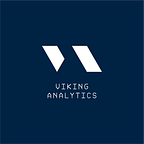Closing the knowledge gap between retiring and newcomer engineers
It is not an exaggeration that knowledge is one of the most valuable assets a company has. Even with the growing trend of automation, technical knowledge can not be just directly bought off a shelf, as it heavily relies on the experience of more seasoned professionals. Not managing it properly can lead to loss of knowledge and several hours of relearning to build up the knowledge base that already exists.
To make a simple comparison; imagine a technical breach resulted in all the documents in the internal network of your company being deleted. Everything, from contracts to customer relationship history, all gone. It would rightfully be considered a catastrophe and it is the reason companies invest millions in cybersecurity: it is damaging and costly to lose strategic information and knowledge, and no one would like to risk it not being recovered or being just partially recovered.
Now imagine essential knowledge about your machines being gradually lost. How would it be if one day, when dealing with an unexpected stoppage or abnormal behaviour, the maintenance team does not have access out to the expert that knows everything about the machine? How long would it take to track all the relevant intelligence that could help fixing the problem? How easy is it to reconstruct the “medical history” of the machine in terms of what has happened in the past and what has been done? Also importantly, how much would that cost to your company?
This is a situation many industries will face. Across the globe, hundreds and thousands of baby-boomer retirements will happen. One organization estimates a loss of 27,000 years of experience due to 700 retirements over the next few years. A story published by Power Electronics on the challenges of replacing the aging engineering workforce in the United States, mentions that by 2030 18% of the American population will be over 65 years, including — naturally — engineers across all industries. In Europe, it is expected that organizations will see over 30% of their experts retiring in the next decade. While hiring recent graduates may help solving these issues, it is known that it takes some years to follow through the learning curve in a company.
Even with investments in training programs and collaboration activities, aiming to redirect knowledge from more senior to younger professionals, the work routine can be imposing, especially in the context of industry 4.0, which requires professionals to deal with highly complex tasks. Time-pressed engineers that oversee several plants may not always have the time to share every bit of information with their teams in a systematic way. And when no information is easily available, resorting to trial and error learning becomes inefficient.
From data to learning to knowledge management
The good news is that the data being historically collected from sensors in machines is already waiting to tell you a detailed story. But this story will be incomplete without an expert viewing, contextualizing, and then transforming it into knowledge. And while this sounds like a long, complex, and slow process, it does not need to be like that.
First of all, it is important to have a solution that allows you to quickly connect, clean and prepare the data so you can use your time to do what really matters: understand what happened and why it happened, identify operational modes, failure modes and other abnormal operational modes. If someone needs to spend hours just looking through spreadsheets or manually preparing data, then there will not be much time available to capture the knowledge in a way that becomes available for collaboration.
It shouldn’t take more than a couple of clicks to be able to have a holistic context around the different events discovered. Combining the events’ summaries, sensor data and expert annotations in a contextualized way translates into valuable knowledge that can be either shared via reports or centrally saved for easy and quick consultation.
The even better news is that MultiViz by Viking Analytics is ready to help you complete the journey from data to knowledge management and be prepared to face the gap between the seasoned experts and the new generation of engineers. Learn more and book a demo today.
Originally posted here.
Founded in 2017, Viking Analytics enables the digital transformation of industrial companies by bringing together people, data, insights, and value. With our software MultiViz, users can quickly prepare, analyze, and process large sensor data without being a data scientist. We also empower organizations to capture expert knowledge and build scalable and reliable smart manufacturing applications including optimization, predictive maintenance, anomaly detection, and digital AI operators. Connect with us: https://vikinganalytics.se
